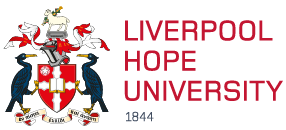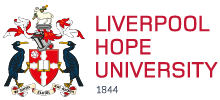A Liverpool Hope University student has told how his experiments with a simple £1 silicone cosmetic sponge could help revolutionise the world of medical care.
It’s been a remarkable year for Alexander Co Abad, who is working towards his PhD in Computer Science and Informatics while specialising in Robotics.
The 39-year-old has achieved the rare feat of securing conference, workshop and journal successes… all in his first 12 months of study.
And his research has resonated through the scientific community.
Alex is a teacher in the Electronics and Communications Engineering Department at the De La Salle University in Manilla, and is at Hope under a scholarship from the Philippine Government.
His work has been focused on something called ‘GelSight’ sensors.
These devices, first invented by experts at the Massachusetts Institute of Technology (MIT) in 2009, essentially provide a highly detailed visual 3D ‘topography’ of any surface by processing ‘touch’ information.
Alex’s work has explored how the ‘microgeometry’ revealed by the sensors might help a robotic arm to grip objects more efficiently - something that could prove crucial when it comes to robot-assisted surgery.
He’s also applied pioneering UltraViolet (UV) light technology to the sensors, resulting in a clarity of visual and tactile mapping not previously possible.
And Alex has also been able to create his own version of the GelSight sensor at a low cost - by way of a £1 cosmetic pad bought from Superdrug - which means he can share it with other researchers, expediting advancements in this exciting tech.
He explains: “Right now there’s a problem in the robotics community when it comes to gripping.
“Sometimes the object a robotic arm touches is so smooth there’s a tendency for it to slide when gripped. We need a sensor to measure this slip, so that we can increase the gripping force. And that’s where GelSight comes into play.
“Another application we’re exploring is material recognition.”
Speaking about the real-world applications of the sensor, Alex says the GelSight could potentially be applied to an endoscope - where a doctor can examine internal organs using a camera - to get extra feedback about what’s really going on inside the body.
He says: “My dream is for the GelSight sensor to be used during surgery.
“With the endoscope, for example, doctors can only rely on the microscopic camera. There’s no other tactile feedback.
“If the endoscope has a cutting element, a surgeon cannot currently sense how much tissue has been cut, or how deep an incision has been made.
“That could all be made possible through the application of this sensor.”
The GelSight could also be used to detect tumours, Alex suggests.
He reveals: “We are exploring the possibility of the sensor being able to identify lumps under the skin.
“That’s a real application that could have a huge impact for the general public, not just the robotics community.”
One of the crucial ingredients when it comes to creating a GelSight sensor is the clear silicone pad that transmits the tactile ‘touch’ information to the computer.
Here Alex managed to use a clear, low-cost silicone cosmetic sponge as the ‘elastomeric slab’ and that skipped the degassing process - as well as hours of curing time in making it.
That opens it up to whole new avenues of research.
He adds: “My goal is to share this with the public so that the technology is able to develop at a faster rate, therefore benefitting us all.
“I was able to find a material readily available in the market, used by many people.
“And it’s so effective. Hopefully the low cost will encourage more researchers to do their own work in this area.”
He also developed switchable UV markers for the GelSight sensor which can be made visible or invisible using UV light. His novel idea made the existing GelSight sensor more unified, low-cost, and easy to fabricate.
Not surprisingly, Alex was invited to present a workshop paper at the International Conference on Robotics and Automation (ICRA) in Montreal, Canada, in May last year.
He’s also set to present his findings at this year’s ICRA convention.
Meanwhile his latest research paper - ‘Visuotactile sensors with emphasis on GelSight sensor’ - was recently accepted for publication in the high-impact IEEE Sensors Journal.
Alex, who receives funding for research and development from the Philippine Government’s Department of Science and Technology - Engineering Research and Development for Technology (DOST-ERDT), says: “I’m really pleased with how the year has gone.
“But it’s important to say that none of this would have been possible without the help of my advisors at Hope. I’m very happy.”
Research Supervisor Dr Anuradha Ranasinghe, from Hope’s School of Mathematics, Computer Science and Engineering, has praised the achievements.
She said: “For Alex to achieve all of this success within a 12 month period is rare indeed and worthy of much praise.
“The work he has carried out is set to resonate through the field of robotics for many years to come.
“And his remarkable feat stands as a shining example of what can be achieved through innovation and application, and should encourage other Hope students to follow suit.”



